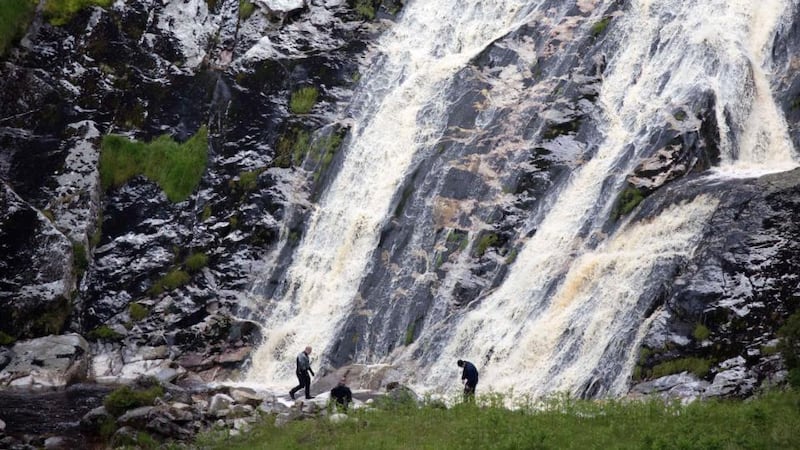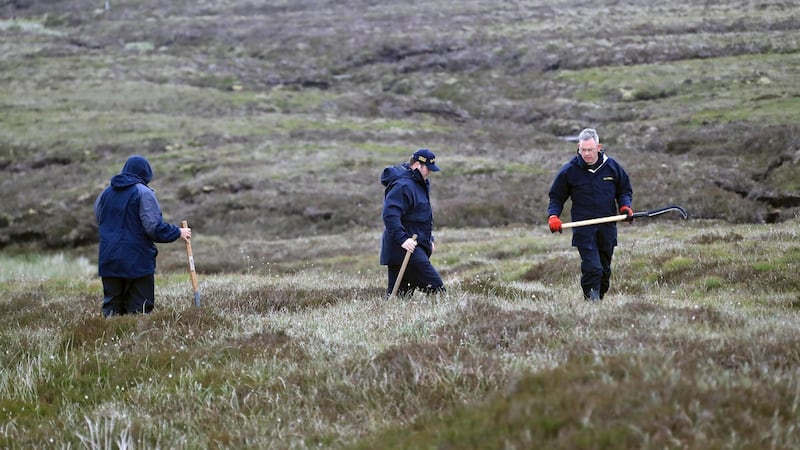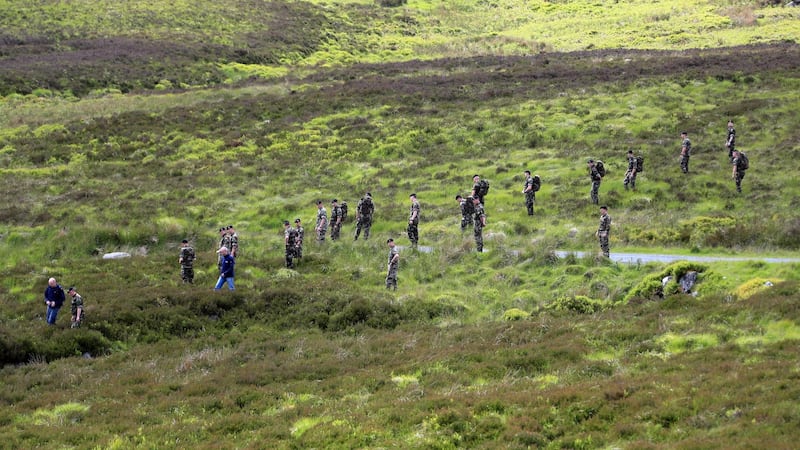For murder investigators the remains of a body are more than just evidence. They are a silent witness, to use forensic pathologists' term for the incredible amount of information that even a preliminary examination provides about how the person died. This is true even when the body is dismembered and scattered widely, as we saw in the Wicklow mountains this week.
"Dismemberment certainly makes it more difficult, but modern forensics' investigation methods and the DNA database have certainly brought it to a stage where they can progress an investigation reasonably quickly," says Denis Cusack, who is professor of forensic and legal medicine at University College Dublin.
Cases like the death of Patricia O’Connor, the woman whose remains were found across isolated parts of Co Wicklow, are, “from a forensic point of view, very tragic but very interesting” for investigators, he says.
There's a person here asking for justice beyond death
Despite the grisly nature of the work, and the human tragedy of a death, gardaí, pathologists, forensic anthropologists, coroners and other investigators approach their work with a respectful professionalism.
“These are still the remains of a person,” Cusack says. “It is upsetting, but people must be professional. The body parts must be treated with respect. And indeed there’s the fact that there’s a person here asking for justice beyond death. So they are very much conscious of that.”
Most professionals are used to dealing with remains in various states of decay.
"Pathologists would have lots of experience of tragic cases when people go missing and are maybe found weeks or months later, or are found after fires. It's not to underestimate it, but they would be very professional in dealing with these situations," says Cusack (who is also the coroner for Co Kildare but is speaking in his capacity as an academic).
When a body part is found, the first step is to confirm the remains are human rather than animal. Often this task falls to a local doctor, such as the Enniskerry GP who was called out in Co Wicklow last Saturday night after the first part of the remains were found by hillwakers.

Once the remains are established to be human, the Garda is obliged to inform the district coroner, who takes lawful possession of the body parts. If a senior garda suspects foul play, the coroner will call in the Office of the State Pathologist to examine the remains.
At this point there are two parallel investigations: the criminal one, involving the Garda and the pathologist’s office, and the coroner’s, which is responsible for determining a cause of death, through an inquest.
The criminal investigation takes precedence. If a suspect is identified, the coroner will open an investigation but immediately adjourn it until the conclusion of any court proceedings.

In the case of a dismembered corpse, the next step for investigators is to establish whether all the body parts come from the same person. They can do this by matching up the parts of the dismembered body or, if that’s not possible, by using blood or DNA tests.
In cases such as that in Co Wicklow, where the Deputy State Pathologist Michael Curtis had to deal with many small body parts being which were located over the course of several days, this can be particularly difficult.
How do you identify a person? You identify them by their facial features and their fingerprints or footprints. So if you want to make that not happen, or delay it, you separate out the body parts
Investigators of Patricia O’Connor’s death initially announced the remains belonged to a 25-year-old man. It wasn’t until later that DNA tests showed the body was that of an older female.
Next the pathologist will try to establish the victim’s identity, a process that is also more difficult in cases involving only partial remains.
Ireland has seen several cases in recent years when the body parts, particularly the head and hands, have been hidden separately, to frustrate their identification.
“Think about it,” Cusack says. “How do you identify a person? You identify them by their facial features and their fingerprints or footprints. So if you want to make that not happen, or delay it, you separate out the body parts, particularly those that have identifying features on them.

“Without a head, identification becomes more difficult, unless on the torso there are some very unique or unusual identifying marks, like tattoos or injuries or marks from previous surgeries.
“If the hands or feet are discovered it may be possible to match them up using fingerprint or footprint records held by the gardaí – which obviously depends on the person’s prints being on record in the first place.
“They can also look at bone types. They can look at characteristics of bone types to determine if they are male or female and to gauge the age,” Cusack says.
Bones’ dimensions can also indicate where in the world a person comes from. Africans have different bone structures from Europeans, particularly in long bones such as those in the arm and leg, Cusack says.
Since 2015 investigators have had a powerful new tool to help in identifications: the national DNA database, which stores profiles of convicted criminals, former offenders and people under criminal investigation.

Several subsections of the database have nothing to do with criminality.
Relatives of missing persons can have samples taken so they can be checked against any remains that are found. Samples can also be taken from unidentified body parts in the hope of matching them to a person in the future, if new evidence emerges or more remains are uncovered.
It's good old-fashioned detective work, using every piece of information you get.
One of the most difficult tasks is establishing a cause of death. Shootings, stabbings or blunt-force-trauma cases are relatively easy to identify as long as the corpse is not too badly decomposed. Strangulation is more difficult to confirm after dismemberment.
In some cases enough blood can be collected for a toxicology test, to indicate if the victim overdosed or was poisoned. Stomach contents can also prove useful.
The time of death can be narrowed down to a surprising degree by gauging decomposition. Cusack says the presence and growth of insects and other organisms can also indicate how long ago a body was dumped.

“It’s good old-fashioned detective work, using every piece of information you get. They may make no sense at first, but you keep adding the little bits to build up a composite picture. It’s like a jigsaw.”
In cases where a body was left out in the open, investigators must bear in mind that foxes or other animals might have caused some damage after death. “But this is relatively easy to sort out,” Cusack says.
Forensic anthropologists, who specialise in examining skeletal remains, can be called in when remains are too badly decomposed for other forms of analysis. They can reconstruct a body and even suggest what a person might have looked like, by analysing the facial bones.
Dismemberment of a corpse adds difficulties for pathologists but can also provide additional clues. “To actually dismember a body requires quite powerful implements. So they can look for traces left not only by the homicide weapon but by heavy-duty cutting equipment,” Cusack says. “It’s not easy to dismember a body.”

Cusack is keen to point out that although forensic pathology can be incredibly useful, it is no substitute for on-the-ground police work, especially when only bones remain.
In the case of Elaine O'Hara, who was murdered by Graham Dwyer in 2012, only her bones were found – and her remains offered no clues about how she had died. Instead, detectives had to rely on evidence of her movements and interaction with Dwyer to secure a conviction.
“We mustn’t underestimate the value of old-fashioned detective work.”
Gardaí now believe Patricia O’Connor was killed at her home in Rathfarham, in Dublin, before someone cut the remains into parts and dispersed them along an isolated mountain road. The 61-year-old grandmother lived with her daughter and worked as a chef in Mount Carmel hospital.
On Thursday, 32-year-old Kieran Greene of Mountainview Park, Rathfarnham, was charged with her murder. A court heard he told detectives “it was self-defence” when the charge was put to him.











